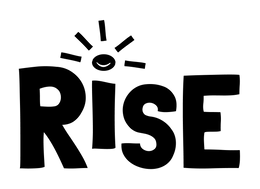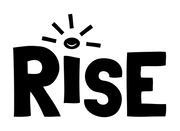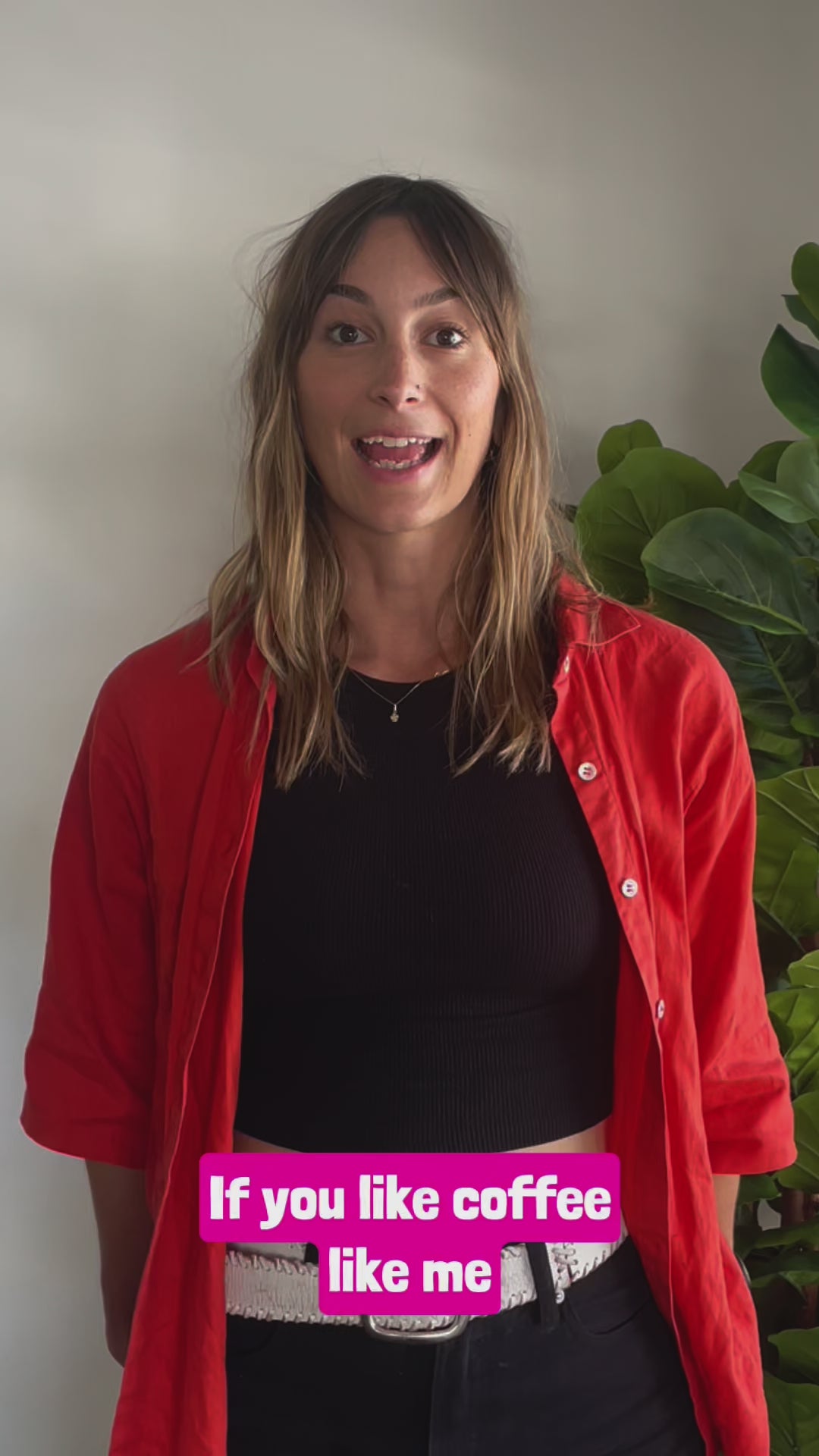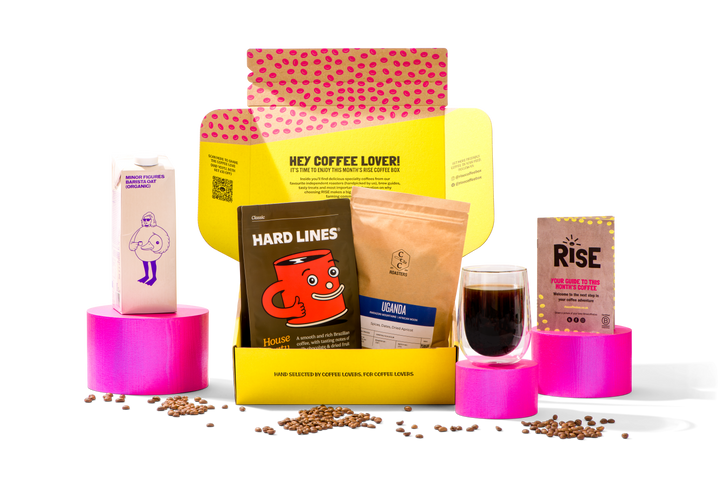How to dial in your espresso machine (Expert tips)
There are so many different ways to make coffee and so many different types of coffees you can make! Once you get sucked into the world of coffee, its hard to get out! The espresso machine has become an integral part of many coffee lovers homes, but getting the right machine and learning to 'dial it in' is critical to enjoying your machine and the coffee beans you are using! In this article read all about dialling in your coffee + find out what our top 3 budget friendly espresso machines are!
Keep reading to perfect your brewing techniques with your RISE coffee box
Firstly, what is an Espresso machine?
An espresso machine is a specialised coffee-making piece of equipment designed to brew espresso, a concentrated and flavourful coffee drink often forming the basis of a flat white or cappuccino. It operates by forcing hot water under high pressure through finely ground coffee beans, extracting rich flavours and creating a creamy layer of foam known as crema into a single or double shot of coffee. Espresso machines come in various types, each with unique features and levels of automation, and knowing what you want or need is crucial!
Secondly, what does 'dialling in' even mean?
Dialling in is the art of finding the right grind size for your brew method. If your coffee is too coarse or too fine, you will have under or over "extracted" coffee which simply put, means you aren't getting the best from your beans! With any new bag of coffee beans, you'll need to adjust your grind type to dial in correctly. Dialling in is all about experimenting and comparing. We mostly get questions from Espresso machine owners, so we'll focus on that for this guide!
Different types of espresso machines:
-
Manual Espresso Machines:
- Description: Requires the user to manually control the brewing process, including grinding, dosing, tamping, and pulling the shot.
- Features: Offers full control over the extraction process, often used by enthusiasts for its hands-on approach.
-
Semi-Automatic Espresso Machines:
- Description: Automates the brewing pressure but requires manual input for grinding, dosing, and tamping.
- Features: Provides a balance between control and convenience, allowing users to adjust brewing parameters while the machine handles the pressure.
-
Automatic Espresso Machines:
- Description: Automates both the brewing process and the shot timing, requiring minimal user intervention.
- Features: Often includes programmable settings for different espresso drinks and ease of use.
-
Super-Automatic Espresso Machines:
- Description: Fully automated, handling grinding, dosing, tamping, brewing, and sometimes even milk frothing.
- Features: Ideal for convenience and consistency, with user-friendly interfaces and programmable options.
-
Dual Boiler Machines:
- Description: Equipped with separate boilers for brewing and steaming, allowing for simultaneous espresso extraction and milk frothing.
- Features: Offers greater control over temperature and consistency, making it suitable for advanced users and coffee shops.
Key Components
- Portafilter: A removable metal filter holder that holds the coffee grounds during brewing.
- Group Head: The part of the machine where the portafilter locks in and where hot water is forced through the coffee.
- Boiler: Heats water to the optimal temperature for brewing. Some machines have multiple boilers or heat exchangers for better temperature control.
- Pump: Generates the pressure needed to force water through the coffee grounds, typically around 9 bars (130 psi).
- Steam Wand: A nozzle for frothing milk and creating microfoam, essential for drinks like lattes and cappuccinos.
How It Works
- Grind: Coffee beans are ground to a fine consistency suitable for espresso.
- Dose: A specific amount of ground coffee is measured and placed into the portafilter.
- Tamp: The coffee grounds are pressed down firmly to create an even surface.
- Brew: The portafilter is locked into the group head, and hot water is forced through the grounds at high pressure, extracting a concentrated shot of espresso.
- Serve: The espresso is poured into a cup, often topped with a layer of crema.
Espresso machines vary in complexity and price, from simple home models to sophisticated commercial units. They are essential tools for brewing high-quality espresso and creating a wide range of espresso-based drinks. There are a tonne of new espresso machines focused on at home brewing!
Our top 3 coffee espresso machines for your home:
1. Barista Express Bean-to-cup coffee machine - the machine owned by Alice and Ben! - £549
Developed by Sage, the Barista Express is here to give you the ultimate cup of coffee. Designed on the principle that ingredients taste better when fresh, the Barista Express prevents degradation of the quality of beans by grinding them directly into the filter for you, to extract their full flavour. The whole process, from bean to coffee, takes less than a minute. We love the speed of this machine, whilst still feeling like you are brewing up your perfect espresso. The hopper holds around 250g of beans (1 bag or 25 espresso shots) and grinds fresh each time!
Use either beans or pre-ground beans, with the conical burr grinder allowing for efficient grinding at high speeds. The machine has 15 grind settings mean you can have your beans as coarse or fine as you want them.
The Thermacoil heating system includes an adjustable temperature control, so you can keep the temperature in line with the coffee you want and prevent loss of flavour from overheating.
The powerful 9 bar pressure system builds gradually to provide even extraction of coffee, giving you a rich, flavoursome drink.
The hot water dispenser will provide you with instantly hot water, great for black coffees, while the 6 cup warming tray will make sure a cold cup doesn’t detract from your enjoyment.
2. Gaggia Classic Pro - £429
The Gaggia Classic is one of the most popular home espresso machines in the world. This is called the classic, and well thats because it is! its been going strong since the 90's!
They're reasonably priced and capable of pulling a great shot of espresso. They are one of the sturdiest machines on the market and easy to self repair. The only downside is that they aren't as user friendly as Sage (as above) and can require some fiddling to get the right temperature.
3. Dualit Espresso coffee machine - £129
This Dualit espresso machine is a solid entry level choice for anyone making the jump from instant coffee to brewing fresh espresso at home. It's fuss-free, fun, and has a simple dial and slimline body that's ideal for your kitchen.
We like the simple nature of the machine and intuitive controls. Its nice and slimline to fit well into a small kitchen space and easy to add ground coffee. It also has an adjustable speed gauge for the steam wand.
Best coffee to use for your espresso machine:
When selecting coffee for an espresso machine, it's crucial to choose the right type to achieve the best flavour and crema. Here are some key considerations and recommendations for the best type of coffee:
1. Type of Beans
-
Arabica Beans: These beans are generally preferred for their complex flavours and aromatic qualities. They offer a wide range of flavours from fruity to nutty and are commonly used in high-quality espresso blends. Get quality beans every month, here
-
Robusta Beans: These beans are often included in espresso blends for their strong, bold flavour and higher crema production. They have a more bitter taste and higher caffeine content compared to Arabica beans. Not our fave, and not found inside a RISE coffee box (Arabica only) but worth considering.
2. Roast Level
- Medium to Dark Roast: Espresso typically benefits from medium to dark roast levels. Dark roasts provide a rich, full-bodied flavour with chocolatey or caramel notes, and they tend to produce a thicker crema. Medium roasts can offer a balanced flavour profile with a pleasant acidity and complexity. All coffee inside RISE is medium roast, accompanied by some light roasts and the occasional medium - dark (but never dark!)
3. Blends vs. Single-Origin
-
Blends: Many espresso enthusiasts prefer blends, which combine beans from different origins to achieve a balanced flavour profile with consistent results. Espresso blends are crafted to deliver a well-rounded flavour with a good crema and are designed to work well with espresso machines.
-
Single-Origin: Single-origin coffees can be used for espresso, offering unique and distinctive flavours from a specific region. While these can produce exceptional shots, they might require more precise dialing in of your espresso machine for optimal results.
4. Grind Size
- Espresso Grind: Coffee for espresso should be ground to a fine consistency, similar to table salt or powdered sugar. A consistent grind size is essential for proper extraction and achieving the best flavor.
5. Freshness
- Freshly Roasted Coffee: Use freshly roasted coffee beans, ideally within 2-4 weeks of roasting. Freshness is crucial for optimal flavour and crema. Grind the coffee just before brewing to preserve its aromatic qualities and ensure the best results. All coffee at RISE is roasted to order, and this is key to getting good coffee. Supermarket coffee can sit on shelves for up to 24 months and often go stale.
Recommendations
-
Espresso Blends: Look for reputable espresso blends from specialty coffee roasters or join our RISE coffee box subscription.
-
High-Quality Single-Origin: If you prefer single-origin coffee, select high-quality beans from regions known for producing excellent espresso, such as Ethiopia or Colombia or try our house Ugandan coffee
By choosing high-quality beans, the right roast level, and the appropriate grind size, you’ll be able to maximise the flavour and crema of your espresso. Experimenting with different blends and origins can also help you find your perfect espresso profile.

Extra tips on how to expertly dial in your espresso machine
Dialing in your espresso machine is crucial for achieving the perfect shot of espresso. Here are some expert tips to help you get the best results:
1. Start with Fresh Coffee Beans
- Tip: Use high-quality, freshly roasted coffee beans. Coffee is best within a few weeks of roasting. Ensure beans are stored in an airtight container away from light and moisture.
2. Use the Right Grind Size
- Tip: Espresso requires a fine grind, but the exact size can vary depending on the coffee and machine. Start with a grind that feels like table salt. Adjust based on the extraction time and taste.
3. Measure and Dose Accurately
- Tip: Use a scale to measure your coffee dose accurately. A standard single espresso shot typically uses about 18-20 grams of coffee, but this can vary. Consistency in dosing is key to consistent results.
4. Ensure Proper Tamping
- Tip: Use a consistent and even tamping pressure, typically around 30 pounds of force. A level and firm tamp ensures uniform extraction and helps avoid channeling.
5. Adjust Extraction Time
- Tip: Aim for an extraction time of 25-30 seconds for a double shot. If the espresso is too bitter, try a coarser grind or reduce the extraction time. If it’s too sour or weak, try a finer grind or increase the extraction time.
6. Maintain Optimal Water Temperature
- Tip: The ideal brewing temperature for espresso is between 190-205°F (88-96°C). Ensure your machine is properly heated and stable before brewing. Consistent temperature is crucial for balanced extraction.
7. Check and Clean Your Equipment Regularly
- Tip: Regularly clean your grinder, espresso machine, and portafilter to prevent coffee oils and residue from affecting flavor. A clean machine ensures better extraction and taste.
8. Experiment and Adjust
- Tip: Dialing in espresso often involves experimentation. Make small adjustments to grind size, dose, and extraction time. Taste your results and adjust based on your preferences and the coffee’s characteristics.
9. Use Water Quality and Pressure
- Tip: Use filtered water to avoid unwanted flavors from impurities. Ensure your machine’s pressure is around 9 bars, as too much or too little pressure can impact extraction.
10. Keep Detailed Notes
- Tip: Record your settings, observations, and adjustments. Keeping detailed notes helps track what works and allows for quicker adjustments in the future.
By following these expert tips, you'll be able to dial in your espresso machine more effectively and enjoy a consistently excellent shot of espresso. Buy your coffee for your espresso machine here

MONTHLY COFFEE DELIVERED TO YOUR DOOR






























Leave a comment